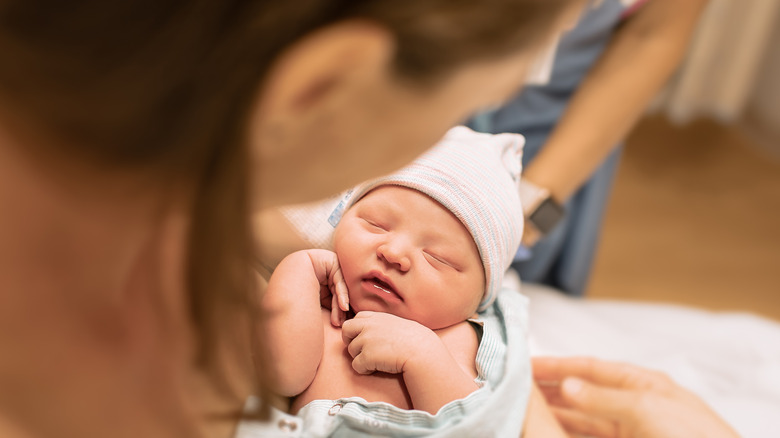Innovative Stem Cell Treatment Might Spell Good News For Babies With Spina Bifida
Hope is on the horizon for babies born with spina bifida, according to a groundbreaking study at UC Davis. Three of the 35 babies to be included in the trial have been born so far, with astonishing results.
The Centers for Disease Control and Prevention (CDC) says spina bifida is a condition that occurs when the backbone that protects the spinal column fails to close completely before birth. The exposure of the spinal cord can lead to nerve and spinal cord damage, along with a variety of physical and cognitive impairments.
"The CuRe Trial: Cellular Therapy for In Utero Repair of Myelomeningocele" specifically addressed Myelomeningocele (MMC), a severe form of spina bifida that often causes paralysis and incontinence from birth (via Study Pages). During MMC repair, surgeons manually open the uterus and close the spinal canal while the fetus is still in the womb.
MMR repair can be done without stem cells after the baby is born, but repair before birth offers better results. Previous fetal MMR repair has been done with or without stem cells, but the innovative stem cell treatment might work even better for babies with spina bifida than previous methods, considering its success in animal studies.
The trial's first surgery exceeded expectations
The CuRe Trial is the first human trial of its kind in the world, and UC Davis Health detailed the in-utero surgery, which required a 40-person team to perform. During the operation, surgeons made a small incision in the uterus and exposed the fetal spinal defect.
Using a microscope, they successfully placed a stem cell patch over the exposed spinal cord and closed the incision, expecting the tissue over the spinal column to regenerate. The moment of truth arrived on September 20, 2021, when Robbie became the first baby to be born after receiving the first-of-its-kind surgery.
The study's lead investigator, Dr. Diana Farmer, tells the Sacramento Bee, "The most exciting thing was a baby came out, kicking her legs and wiggling [her] toes, which really exceeded expectations. It was very clear the minute she was born that she was kicking her legs, and I remember very clearly saying, 'Oh my God, I think she's wiggling her toes.'"
This was good news because if she had not received the treatment, it is likely she would have been born with leg paralysis. According to UC Davis Health, more research is needed during the safety phase of this trial, but the initial results have been promising.
Robbie just turned one year old, and researchers will continue to monitor her and other babies born into the study for six years after birth, with a crucial checkup at 30 months to see whether the toddlers have begun walking and potty training.


